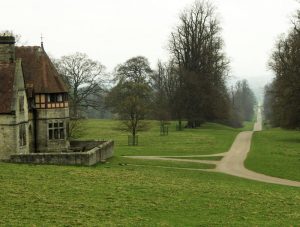From Sylvia Foxton:
It was good to be brought up to date on the Skell Valley Project by Nabil Abbas, the project manager, at our November lecture.
The four-year Project, which started in April 2021, has been spearheaded by the National Trust and Nidderdale Area of Outstanding Natural Beauty (AONB). A number of other organisations are also involved in the aim to deliver this National Heritage Lottery Funded project, focussing on 12 miles of the River Skell rùnning from Dallowglll Moor, through the World Heritage Site of Fountains Abbey and Studley Royal, and then into the City of Ripon. Nabil took us through 900 years of history, explaining that various modifications over the years have led to flooding.
The project aims to rejuvenate the River Skell area, protecting the valley and its cultural heritage, and the four-year project involves local partners – landowners, farmers and volunteer groups. Efforts to reduce flooding inclùde tree planting, meadow creation and ponds, which reduce soil run-off and slow the flow of water. The project will also reward farmers for delivering conservation measures. Some farmers have benefited from new farm tracks and improved drainage. Hedgerows have been planted and restored, and new ponds are attracting wildlife. £7,000 a year is budgeted to remove silt, but what to do with it?
 With over a year of the 4-year project still to go, it is hoped to introduce four new walking routes in the valley. One will be “From Obelisk to Obelisk” (Fountains Abbey to Ripon), and another will include footpath improvements at Hell Wath. Other priorities include bringing to life “lost” heritage sites along the course of the river, including restoring the 19th-century landscape at Eavestone Lake. The latter is on privately-owned land and parking is limited, but it is not far from Grantley village.
With over a year of the 4-year project still to go, it is hoped to introduce four new walking routes in the valley. One will be “From Obelisk to Obelisk” (Fountains Abbey to Ripon), and another will include footpath improvements at Hell Wath. Other priorities include bringing to life “lost” heritage sites along the course of the river, including restoring the 19th-century landscape at Eavestone Lake. The latter is on privately-owned land and parking is limited, but it is not far from Grantley village.
